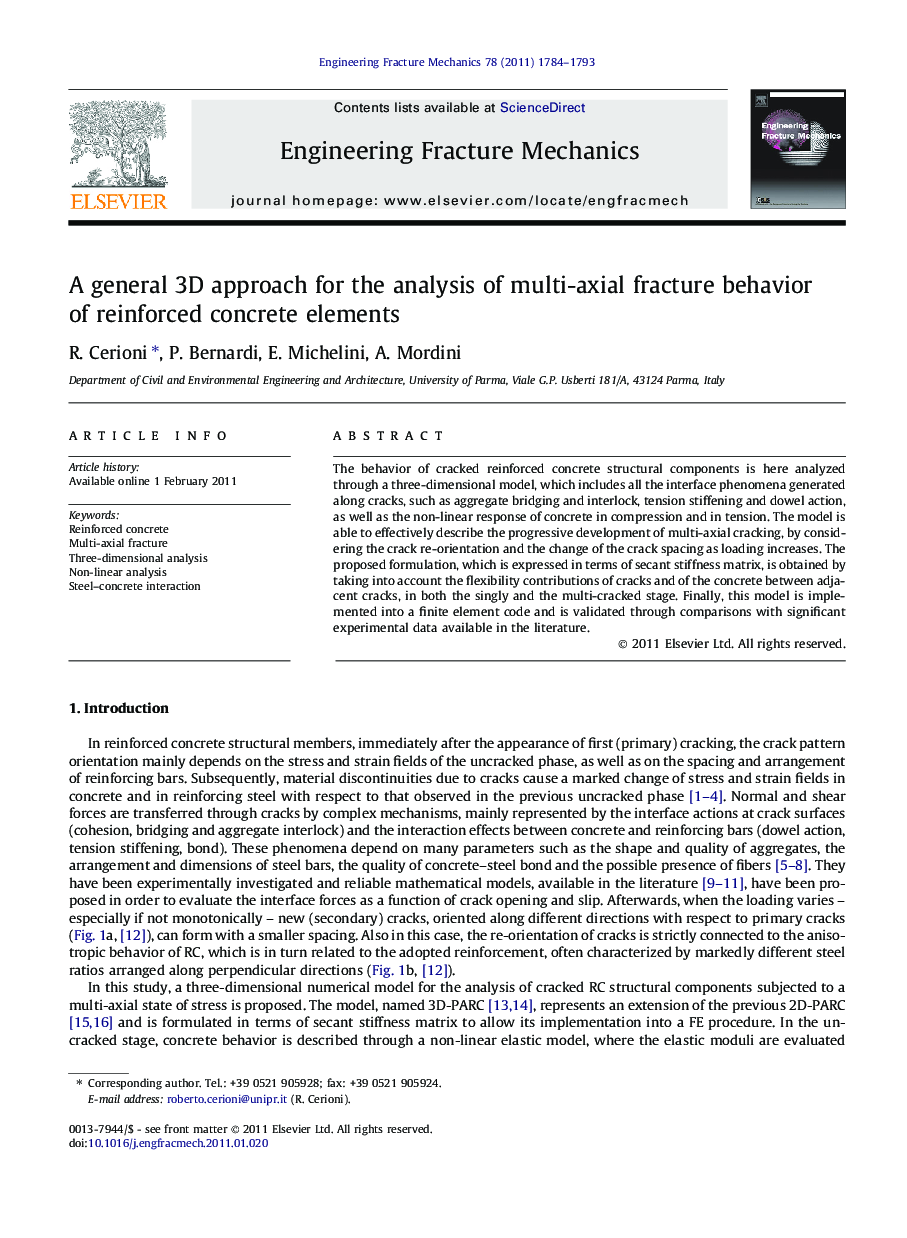| Article ID | Journal | Published Year | Pages | File Type |
|---|---|---|---|---|
| 771148 | Engineering Fracture Mechanics | 2011 | 10 Pages |
The behavior of cracked reinforced concrete structural components is here analyzed through a three-dimensional model, which includes all the interface phenomena generated along cracks, such as aggregate bridging and interlock, tension stiffening and dowel action, as well as the non-linear response of concrete in compression and in tension. The model is able to effectively describe the progressive development of multi-axial cracking, by considering the crack re-orientation and the change of the crack spacing as loading increases. The proposed formulation, which is expressed in terms of secant stiffness matrix, is obtained by taking into account the flexibility contributions of cracks and of the concrete between adjacent cracks, in both the singly and the multi-cracked stage. Finally, this model is implemented into a finite element code and is validated through comparisons with significant experimental data available in the literature.
